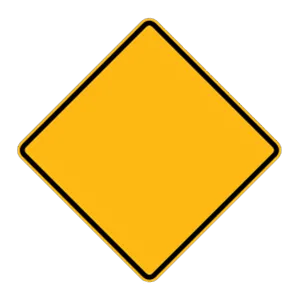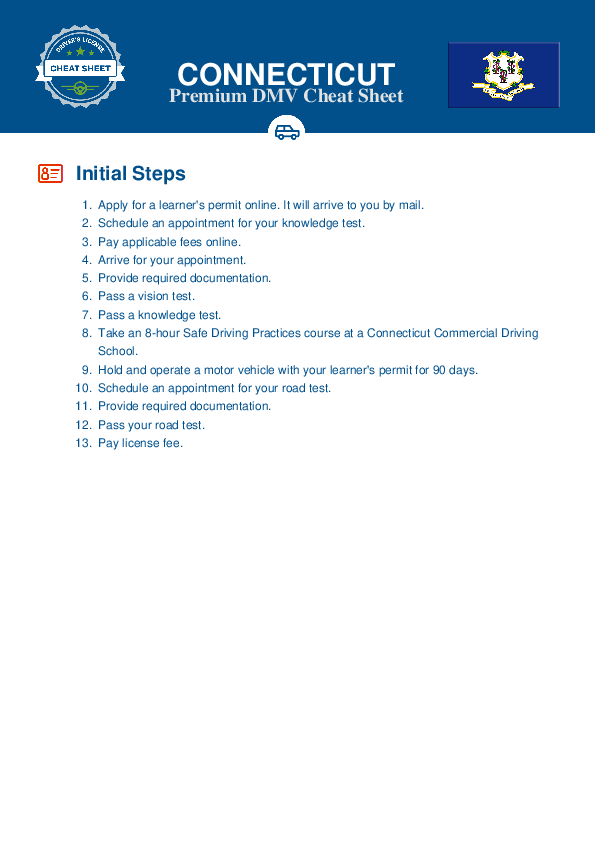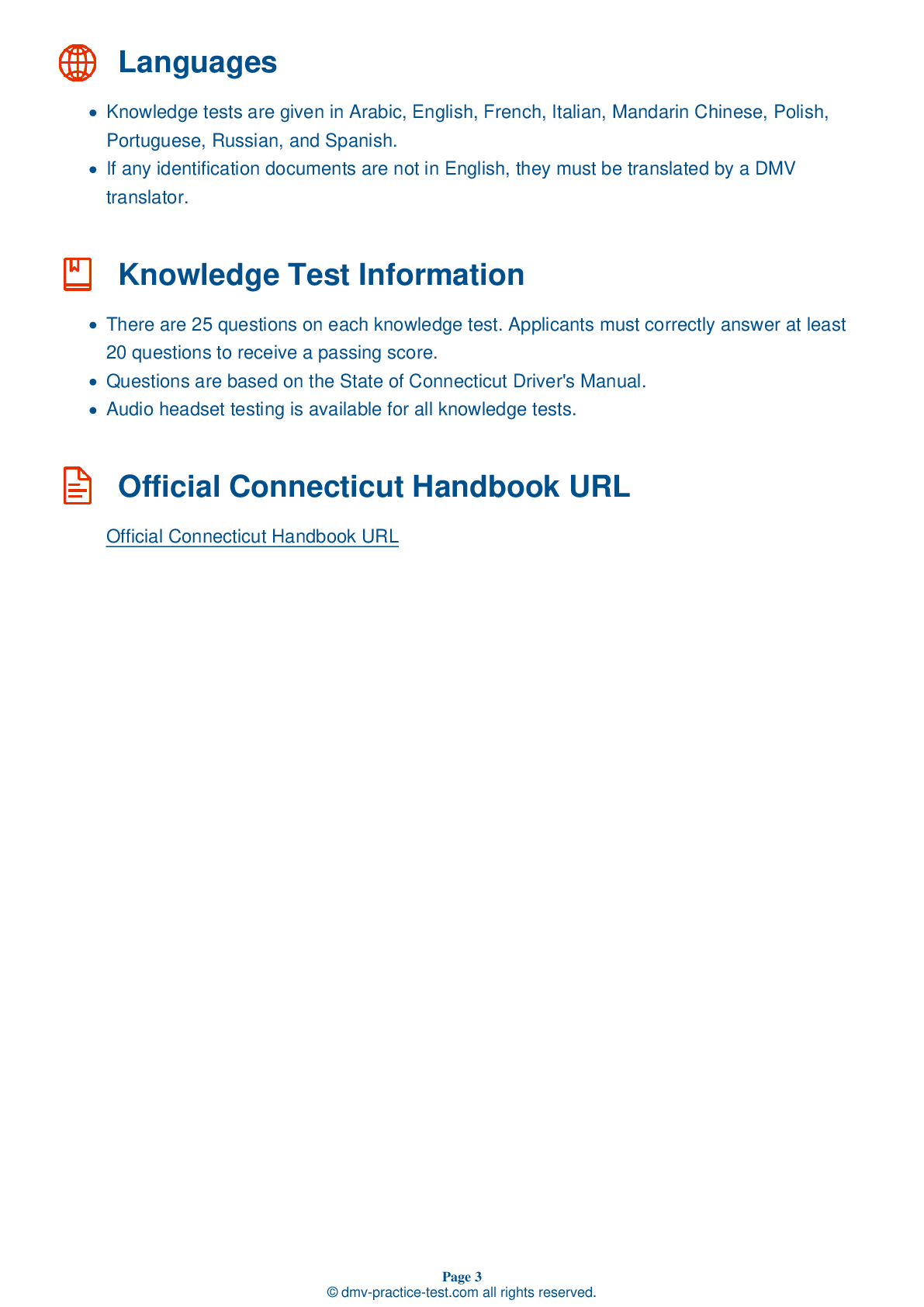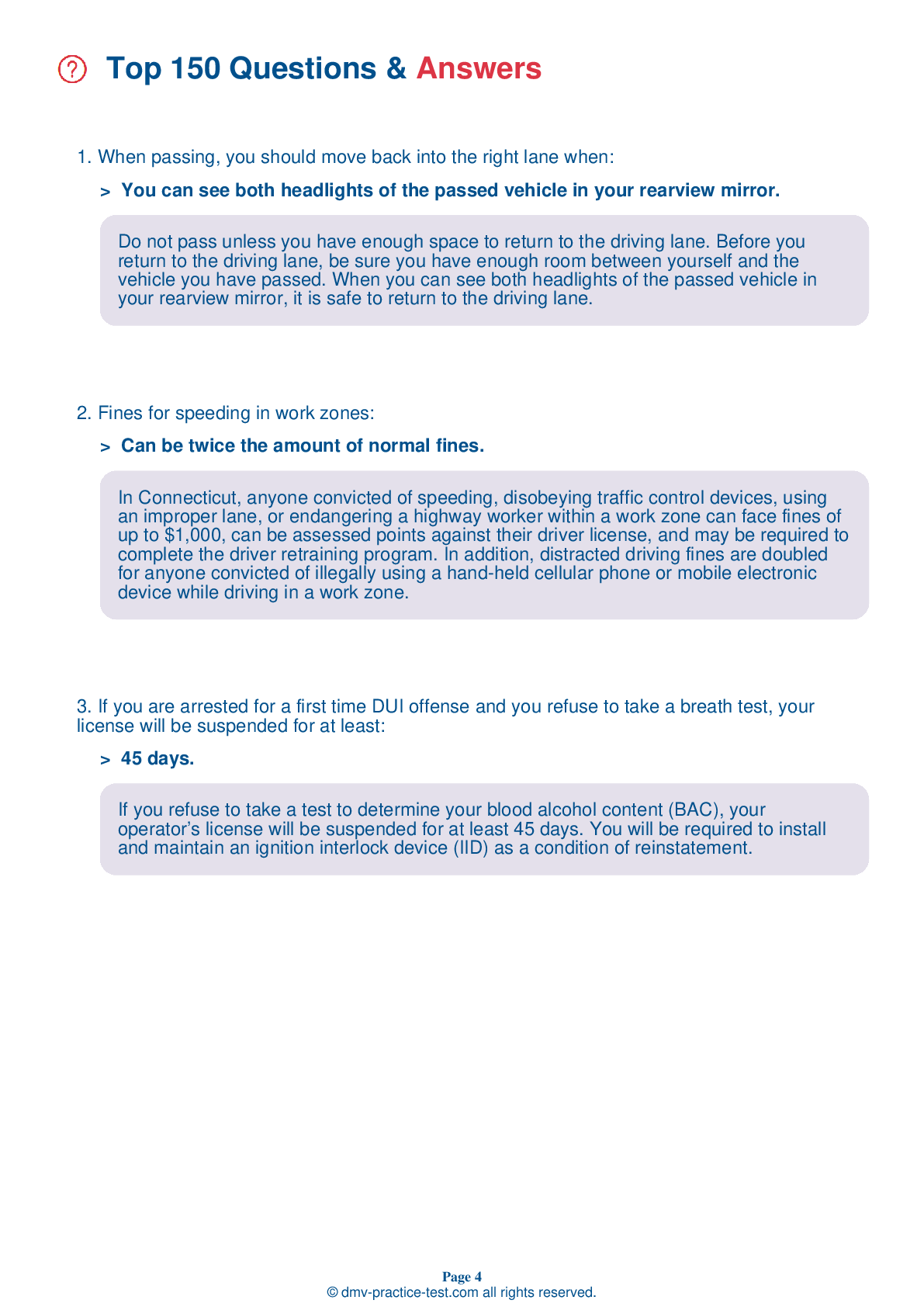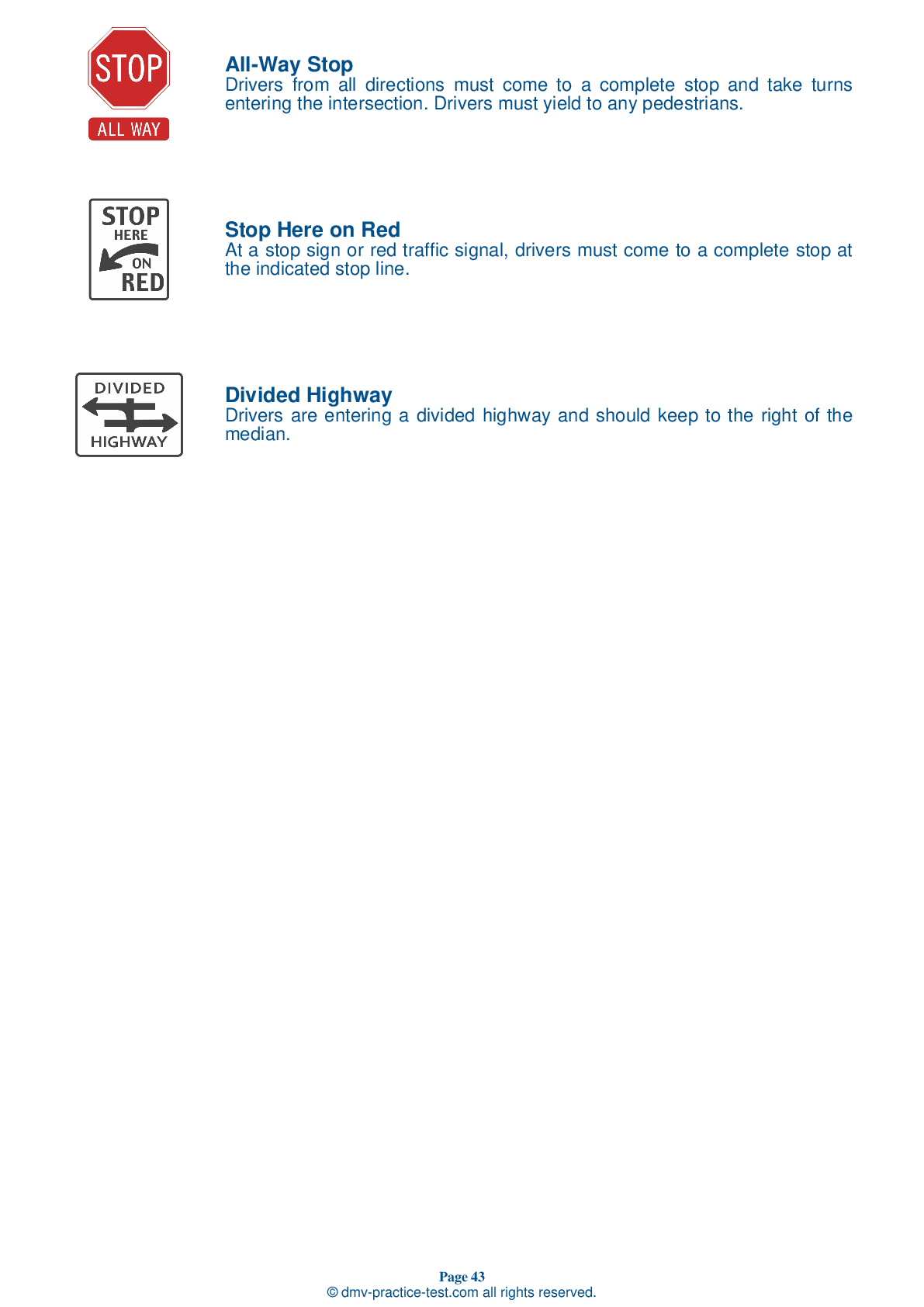FREE Connecticut DMV Practice Test #14
This set of Connecticut DMV practise tests was just updated for January 2025. It includes questions based on the Connecticut Driver Handbook's most essential traffic signs and regulations for 2025. Use actual questions that are very similar (often identical!) to the DMV driving permit test and driver's licence exam to study for the DMV driving permit test and driver's licence exam.
Each practise test question has a hint and explanation to assist you in remembering the concepts. The written component of the official DMV test will include questions about road rules, traffic signs, and driving statutes, as well as information from the Driver Handbook.
To achieve the required passing grade, you must correctly answer 20 of the 25 questions. Take our DMV practise exam to help you prepare for your Connecticut instruction permit or driver's licence.
The DMV exam is available in several languages.
Using any form of testing help will result in an automatic fail, and the DMV may take further action against your driver's licence, so avoid it.
1 . Water on the road can cause a vehicle to hydroplane. Your car may hydroplane at speeds as low as:
Hydroplaning occurs when there is standing water on a roadway. At speeds up to 35 mph, most tires will channel water away from the tire. As your speed increases past 35 mph, tires cannot channel the water as well and your tires may start to lose contact with the road and ride over the water like a set of water skis.
2 . It is legal to make a left turn at a red traffic light after stopping only if:
After coming to a complete stop, you may turn left at a red light only if you are traveling on a one-way street and turning onto another one-way street. Only make the turn if there are no posted signs prohibiting such a turn.
3 . If you are being passed in a no passing zone, you should:
Passing areas are based on how far ahead drivers can see. Allow the passing vehicle to re-enter the drive lane as easily as possible to help everyone avoid potential upcoming hazards.
4 . Before changing lanes or attempting to pass another vehicle, you should:
Every time you want to change lanes or otherwise move your vehicle to the right or left, signal to alert other drivers to your intentions. Always check your mirrors and turn your head to check your blind spot before attempting any lateral move.
5 . When driving behind another vehicle at night, you should:
Use high beam headlights only when driving in rural areas and when other cars are not nearby. Lower your headlights to their low beam setting when you are following closely behind another driver.
6 . When a car with bright headlights drives toward you at night, you should:
To avoid being blinded when driving at night, do not look directly at the headlights of oncoming cars. Instead, look toward the right edge of the road until the oncoming driver has passed.
7 . This sign means you are approaching a railroad crossing that does not have a signal. You should:
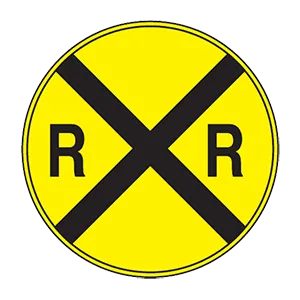
At a railroad crossing marked with this sign, a driver should look both ways, listen for any trains, and be prepared to stop if any trains are nearby. Never try to outdrive an oncoming train.
8 . A sign with this shape means:
